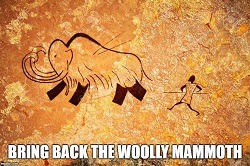

 The Accurate Reloading Forums
The Accurate Reloading Forums  THE ACCURATE RELOADING.COM FORUMS
THE ACCURATE RELOADING.COM FORUMS  Hunting
Hunting  Horse
Horse  Marsh Tacky
Marsh TackyGo  | New  | Find  | Notify  | Tools  | Reply  |  |
| One of Us |
A barely surviving breed Breeders are trying to save extremely rare marsh tacky horse native to South Carolina By BRUCE SMITHAssociated Press Associated Press photos Marsh tacky horses run free on D.P. Lowther’s farm in Ridgeland, S.C. Only about 150 of the breed remain. Breeder David Grant stands with a young marsh tacky born on his farm near Darlington, S.C. Jeanette Beranger, a program manager with the American Livestock Breeds Conservancy, talks with Lowtheron his farm. To learn more The American Livestock Breeds Conservancy’s Web site is at www.albc-usa.org YONGES ISLAND, S.C. – During centuries of isolation on the Carolina Sea Islands, the short-legged, sway-backed marsh tacky horses became perfectly suited for toiling long hours in the swamps and oppressive humidity. But their wild looks and workhorse reputation – their name comes from the old English word meaning “common†– didn’t exactly make them prized among horse lovers. Today, only about 150 of them remain. Now, breeders are coming together to save the tacky, whose ancestors were left by colonial Spanish explorers. “You have to acquire a taste for these horses,†said David Grant, who has almost two dozen tackies on his Darlington County farm. “They are not as attractive as an Arabian, a quarterhorse or a thoroughbred, but now that I breed them and use them, beauty is in the eye of the beholder.†Those who know the tackies say there’s plenty to love about them. They can take hunters into woods and marshes that can’t be reached by foot or four-wheelers. They don’t flinch when a rider fires a gun from the saddle. Their deep, narrow chests give them more stamina than quarterhorses over long distances, and their hind ends slope downward, allowing tight turns in cane breaks and woods where other horses might have to back out. “The South, and this entire country; they helped make it,†said Ed Ravenel, who raises tackies on his Yonges Island farm outside Charleston. “You can work ’em, you can ride ’em. When you put them in swamps and mud like we have around here in the Deep South ... instead of panicking and floundering around, they can just plow right on through it.†Intelligent and superbly adapted to the Southern humidity and coastal marshes, tackies can be broken quickly and prove docile for even the youngest riders. They can survive on marsh grass and forage other horses won’t eat – farmers and owners simply kept them tied up in their yards over the years. “We haven’t found anything they are not good at,†said Jeanette Beranger, a program manager with the American Livestock Breeds Conservancy. “They jump like rabbits, have a lot of endurance and can thrive on nothing.†The conservancy, a non-profit group working to preserve 150 threatened breeds of livestock and poultry, has helped put together a breeders association to preserve the tackies. Beranger estimates the population will have to increase to about 1,000 to ensure permanent survival. The more immediate goal is to get people in the Carolinas and elsewhere interested in owning and riding them. “I don’t think they are ever going to overtake the quarterhorse in popularity,†she said. But they are ideal “if somebody is looking for an easy keeper that is safe with children.†The tackies’ colonial Spanish strain comes from the same ancestors as cracker horses in Florida and bankers from the Outer Banks of North Carolina. But DNA testing has found that the tackies are a separate breed, with unique characteristics thanks to their relative isolation. D.P. Lowther, a 76-year-old farmer in Ridgeland, rode tackies herding cattle as a boy and began breeding them decades ago because he worried about their survival. He deserves much of the credit for preserving the breed, and now has about 100 tackies on his pastures in Ridgeland, about 30 miles from Hilton Head Island. He got a number of his horses from the island as it was transformed over the years into a resort destination. “I’ve got some I wouldn’t be afraid to put a saddle on and ride all the way to Charleston,†75 miles away, Lowther said. “An 800-pound marsh tacky will ride a 1,200-pound quarterhorse into the ground.†Ravenel said today’s tackies are a bit bigger than their ancestors because they are better cared for. He said breaking one of the horses is usually as simple as putting a saddle on it. “If a man told me he would like a horse he can depend on to ride, to work, to put into several different disciplines, to haul and not worry about the horse breaking down or faltering or running off, the closest I could come to a guarantee would be one of these tacky horses.†~Ann  | ||
|
| One of Us |
I've never heard of them ... they may be fine animals (sure sounds like it) but I'd have to argue with the part about "native to South Carolina." No horse is nativeto any part of America. | |||
|
| Powered by Social Strata |
| Please Wait. Your request is being processed... |
|

Visit our on-line store for AR Memorabilia

